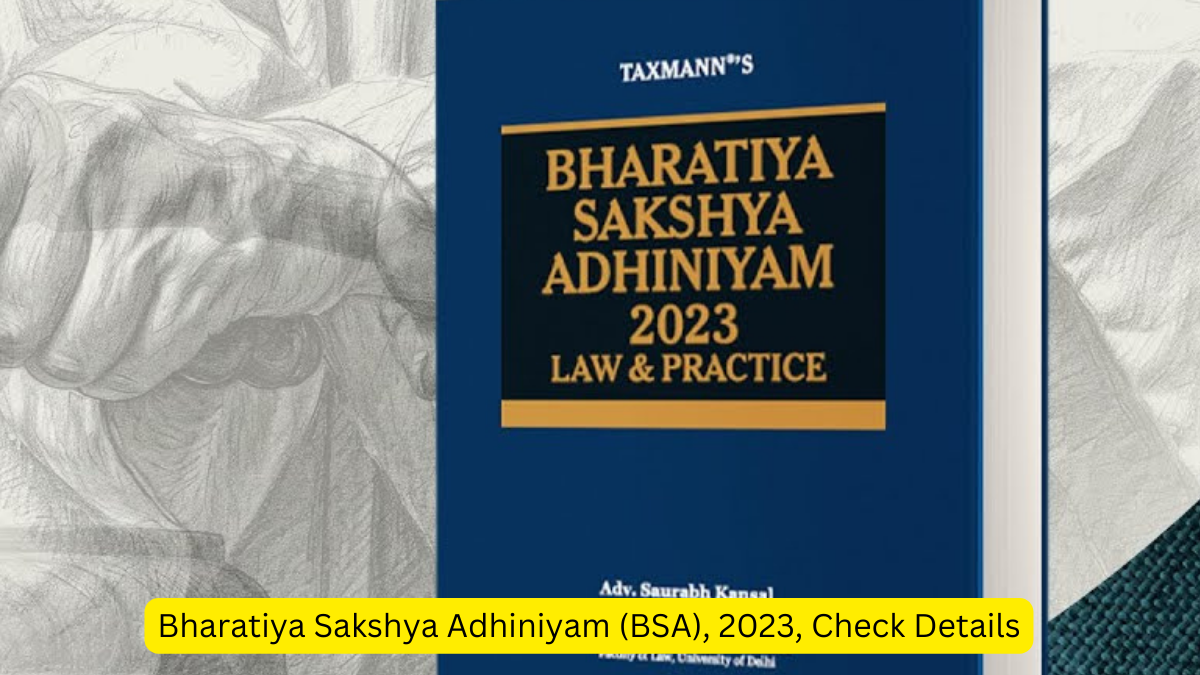The new criminal laws, the Bharatiya Nyaya Sanhita (BNS), the Bharatiya Nagarik Suraksha Sanhita (BNSS) and the Bharatiya Sakshya Adhiniyam(BSA) are taking effect from July 1, 2024. These laws repeal and replace the Indian Penal Code, the Code of Criminal Procedure and the Indian Evidence Act respectively.
New law passed
The new law was passed by Parliament last December, with Home Minister Amit Shah, who had piloted the change, saying that the legislations would give priority to providing justice, unlike the British-era laws that gave primacy to penal action. “These laws are made by Indians, for Indians and by an Indian Parliament and marks the end of colonial criminal justice laws,” he said.
All about Bharatiya Sakshya Adhiniyam
The Bharatiya Sakshya Adhiniyam (BSA) replaces the Indian Evidence Act and introduces changes in the way evidence is processed. The BSA allows for “electronic and digital records”. This covers a wide range of electronic records, which includes emails, server logs, files stored on computers, laptops, or smartphones, website content, location data, and text messages, among others. The BSA also allows for oral evidence to be taken electronically. Additionally, to provide more protection to the victim and enforce transparency in investigation related to an offence of rape, the statement of the victim shall be recorded through audio-video means.
Expanded secondary evidence
The BSA has also expanded “secondary evidence” to include oral and written admissions. It states that secondary evidence will include “evidence of a person who has examined a document, the original of which consists of numerous accounts or other documents which cannot conveniently be examined in Court, and who is skilled in the examination of such documents”.
Difference between Old Law and New Law
| Aspect | Old Law (Indian Evidence Act, 1872) | New Law (Bhartiya Sakshya Adhiniyam, 2023) |
|---|---|---|
| Introduction Date | 1872 | 2023 |
| Colonial Influence | Drafted during British colonial rule | Drafted to reflect post-independence and modern Indian values |
| Language and Terminology | Archaic English | Simplified and modernized language |
| Structure | Structured with 167 sections | Revised structure, includes new sections |
| Admissibility of Evidence | Detailed rules on admissibility | Updated rules considering technological advancements |
| Electronic Evidence | Basic recognition in amendments | Comprehensive provisions for electronic and digital evidence |
| Hearsay Rule | Strict adherence to hearsay rule | Modified to accommodate modern communication methods |
| Witness Testimony | Traditional procedures | Enhanced procedures including video conferencing for testimony |
| Relevance of Evidence | Defined under Sections 5-55 | Expanded to include modern types of evidence |
| Documentary Evidence | Sections 61-90 | Updated to include electronic documents |
| Presumption | Various presumptions detailed | New presumptions reflecting modern societal norms |
| Confessions | Sections 24-30 cover confessions | Revised provisions on confessions, especially digital confessions |
| Privileged Communication | Detailed in Sections 122-132 | Expanded to cover modern professional communications |
| Expert Testimony | Sections 45-51 | Broadened scope to include digital forensic experts |
| Burden of Proof | Sections 101-114 cover burden of proof | Updated rules considering new types of evidence |
| Character Evidence | Sections 52-55 | Revised to reflect current societal values |
| Presumption of Innocence | Strongly upheld | Continued emphasis with additional safeguards |
| Alibi | Specific provisions | More detailed provisions on proving alibi |
| Sexual Offenses Evidence | Limited recognition of victims’ rights | Enhanced protections and considerations for victims |
| Corroboration | Requirement for corroboration in certain cases | Updated requirements, especially in cases of digital evidence |
| Chain of Custody | Basic principles | Detailed procedures for maintaining chain of custody for digital evidence |
| In-camera Proceedings | Limited provisions | Expanded scope for in-camera proceedings, especially in sensitive cases |
| Forensic Evidence | Basic inclusion | Extensive provisions for forensic evidence, including DNA |
| Hostile Witnesses | Provisions for dealing with hostile witnesses | Updated rules considering the impact of digital threats |
| Adverse Inference | Sections on adverse inference from silence or non-production of evidence | Updated to reflect modern legal standards |
| Reforms Focus | Admissibility and relevance primarily | Emphasis on efficiency, technology, and victim rights |




 India Becomes First Country to Commercia...
India Becomes First Country to Commercia...
 Centre Unveils ₹17 Lakh Crore PPP Projec...
Centre Unveils ₹17 Lakh Crore PPP Projec...
 Haryana to Launch India's First Hydrogen...
Haryana to Launch India's First Hydrogen...







